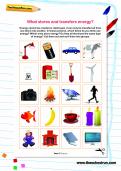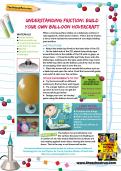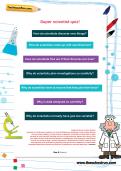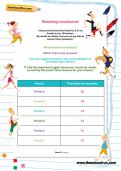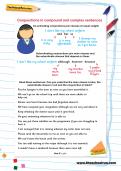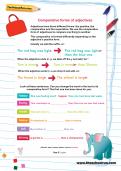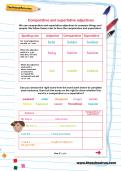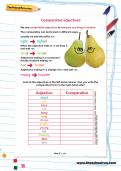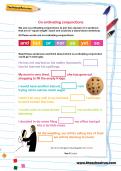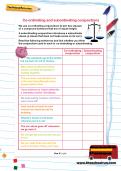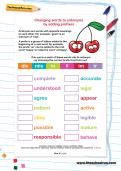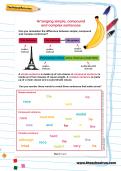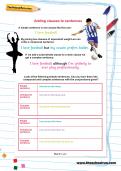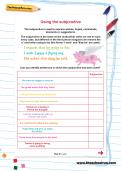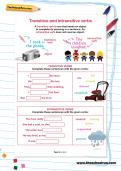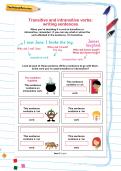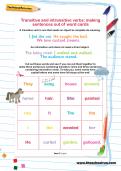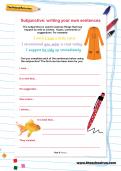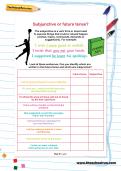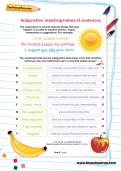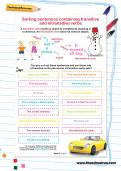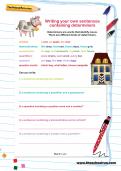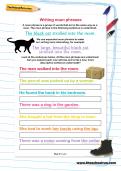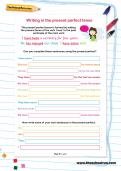worksheets
Free worksheets: Science, KS2, Y6
You’ll need to login or Register first to access these worksheets for free.
Once you’ve tried out our free worksheets, why not explore all our resources (1000s of worksheets, interactive tutorials, learning packs and more) with a 14-day FREE trial subscription.
What stores and transfers energy?
Energy cannot be created or destroyed, it can only be transferred from one store into another. In these pictures, which items do you think use energy? Which ones store energy? Do they all store/use the same type of energy? Cut them out and sort them into groups.
Understanding friction: Build your own balloon hovercraft
When a moving surface slides on a stationary surface it rubs against it, which slows it down. This is due to friction, a force which resists the movement of one object sliding past another. Understand more about friction with a fantastic practical project: make your own balloon hovercraft!
Super scientist quiz
Quiz questions to encourage your child to think about how scientists work and why they do the things they do.
Reaching conclusions
A worksheet showing results of an experiment with questions underneath to consider.
Conjunctions in compound and complex sentences
Co-ordinating conjunctions join clauses of equal weight. Subordinating conjunctions join main clauses and the subordinate clauses that depend on them. Read these sentences. Can you underline the main clause in blue, the subordinate clause in red and the conjunction in black?
Comparative forms of adjectives
Adjectives have three different forms: the positive, the comparative and the superlative. We use the comparative form of adjectives to to compare one thing to another. The comparative is formed differently depending on the adjective’s positive form. Look at these sentences. Can you change the word in the box to its comparative form?
Comparative and superlative adjectives
We use comparative and superlative adjectives to compare things and people. Can you choose the right word from the word bank to complete each sentence, then tick the boxes on the right to show whether this word is a comparative or a superlative?
Comparative adjectives
We use comparative adjectives to compare one thing to another. Look at the adjectives in the left-hand column. Can you write the comparative form on the right-hand side?
Co-ordinating conjunctions
We use co-ordinating conjunctions to join two clauses of a sentence that are of ‘equal weight’ (each one could be a stand-alone sentence). Read these sentences and think about which co-ordinating conjunction could go in each gap.
Co-ordinating and subordinating conjunctions
We use co-ordinating conjunctions to join two clauses of a compound sentence that are of equal weight. A subordinating conjunction introduces a subordinate clause (a clause that does not make sense on its own). Read the following sentences and tick whether you think the conjunction used in each is co-ordinating or subordinating
Changing words to antonyms by adding prefixes
Antonyms are words with opposite meanings to each other. For example, ‘good’ is an antonym of ‘bad’. A prefix is a group of letters added to the beginning of a root word; for example,
the prefix ‘un’ can be added to the root word ‘happy’ to make the word ‘unhappy’. Can you turn each of these words into its antonym by choosing the correct prefix from this row?
the prefix ‘un’ can be added to the root word ‘happy’ to make the word ‘unhappy’. Can you turn each of these words into its antonym by choosing the correct prefix from this row?
Arranging simple, compound and complex sentences
A simple sentence is made up of one clause. A compound sentence is made up of two clauses of equal weight. A complex sentence is made up of a main clause and a subordinate clause. Can you reorder these words to reveal three sentences that make sense?
Adding clauses to sentences
Look at the following simple sentences. Can you turn them into compound and complex sentences with the conjunctions given?
Using the subjunctive
The subjunctive is used to express wishes, hopes, commands, demands or suggestions. The subjunctive is the same as the (indicative) verbs we use in most every case, but different in the third person singular (we remove the ‘s’) and when using to be (the forms ‘I were’ and ‘they be’ are used). Can you identify sentences in which the subjunctive has been used?
Transitive and intransitive verbs
A transitive verb is one that needs an object to complete its meaning in a sentence. An intransitive verb does not need an object. Complete these sentences with the given verbs.
Transitive and intransitive verbs: writing sentences
When you’re deciding if a verb is transitive or intransitive, remember: if you can say what or whom the verb affected in the sentence, it’s transitive. Look at each of these pictures. Write a sentence to go with them. Is the verb you’ve used transitive or intransitive?
Transitive and intransitive verbs: making sentences out of word cards
A transitive verb is one that needs an object to complete its meaning. Cut out these words and see if you can put them together to make three sentences containing transitive verbs and three sentences containing intransitive verbs.
Subjunctive: writing your own sentences
The subjunctive is used to express things that may happen as well as wishes, hopes, commands or suggestions. Can you complete each of the sentences below using the subjunctive?
Subjunctive or future tense?
The subjunctive is a verb form or mood used to express things that could or should happen (wishes, hopes, commands, demands or suggestions). Look at these sentences. Can you identify which are written in the future tense and which are subjunctive?
Subjunctive: matching halves of sentences
The subjunctive is used to express things that may happen. It is used to express wishes, hopes, commands or suggestions. Ten sentences that use the subjunctive have been cut in half and then mixed up. Can you match them up in a way that makes sense?
Sorting sentences containing transitive and intransitive verbs
A transitive verb needs an object to complete its meaning in a sentence. An intransitive verb does not need an object. Can you cut out these sentences and sort them into a transitive-verbs pile and an intransitive-verbs pile?
Writing your own sentences containing determiners
Determiners are words that identify nouns. There are different kinds of determiners. Can you write some sentences with different kinds of determiners?
Writing noun phrases
A noun phrase is a group of words that act in the same way as a noun. Look at these sentences. All the noun phrases are underlined. Can you expand each noun phrase and write a new, more
descriptive sentence underneath?
descriptive sentence underneath?
Writing in the present perfect tense
The present perfect tense is formed by adding the present tense of the verb ‘have’ to the past participle of the main verb. Can you complete these sentences using the present perfect?
